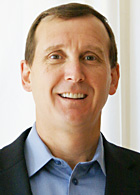
Even before the COVID-19 pandemic, hospital readmission for older adults had become a $20 billion annual expense for Medicare. An important study by the University of Texas Division of Rehabilitation Sciences found that the 30-day readmission rates among discharged patients averaged close to 12% ― and as high as 18.8% ― for six main impairment groups.
Skilled nursing communities who reduce readmissions by ensuring care plan compliance of discharged patients can receive up to a 1.6% bonus in Medicare Part A payments. But those that do not reduce readmissions may see their payments cut by up to 2% — and data from the Centers for Medicare & Medicaid Services showed 73% of skilled nursing communities were set to receive a penalty in fiscal 2019.
Now more than ever, there is strong financial incentive for skilled nursing communities to reduce readmissions by ensuring that discharged patients are consistently following their care plans. Voice technology can help greatly improve post-discharge compliance and make follow-up efforts easier for staff.
Today, many skilled nursing communities still use manual processes to track and follow-up with discharged patients. These manual processes are often ineffective. They take up time, require staff to make multiple phone calls to discharged patients and keep them from other key tasks.
In addition, these processes often rely on an overburdened staff and are prone to human error — causing inaccurate or incomplete wellness and care plan check follow-ups.
But voice technology solutions allow discharged patients to perform their wellness, care plan and safety checks via optional means. They can:
- Receive an inbound telephone call and press a number on the telephone keypad to confirm they are OK;
- Call the community’s designated phone number by a specific required date/time;
- Check in via a voice-activated Amazon Alexa-enabled device.
Automated voice technology also allows care providers to collect additional details to ensure patients are complying with their post-discharge by asking important follow-up questions, such as:
- “How are you feeling?”
- “Are you following your care plan?”
- “Do you have questions about your care plan or medicines?”
- “Do you need assistance or supplies?”
- “Would you like someone to call you to discuss any other questions or issues?”
The nursing/rehab center staff is then automatically notified about which discharged patients have or have not updated their wellness status on time, along with the patients’ responses to the custom follow-up questions. This greatly reduces both the effort and human error — and increases the touch points providers can make with their discharged patients.
The benefits of implementing such voice technology are virtually immediate. It improves patient compliance to care plans, boosts the accuracy and timeliness of patient wellness status, cuts labor time and costs spent on manual checks, and allows care staff to focus on high-priority tasks.
Nexion Health Management implemented automated voice technology at its skilled nursing communities to help communicate with staff, patients and families during the COVID pandemic. Nexion is now looking to the same technology to follow-up with discharged patients.
“Because we know there’s such a challenge with rehospitalization for residents who have been discharged from our communities, we are looking to voice technology to reach out to residents post-discharge to be able to check in on them,” said Meera Riner, chief operating officer. “This technology will make us more efficient and resourceful so we can better mitigate readmissions.”



